Gudi Padwa is an Indian festival that celebrates the start of a new year and brings together people from all walks of life. It’s a time for joy, festivity, and renewal. To mark this auspicious occasion, let’s look at what Gudi Padwa is all about and how it unites us in spirit!
The Gudi Padwa Festival has been celebrated since ancient times as part of Hindu culture. The Marathi word ‘padva’ or ‘padavo’ means “new beginning.” This particular day marks the first day of Chaitra Navratri, which begins on the same day every year according to lunar cycles. On this day, Hindus celebrate with great passion by setting up colourful banners called ‘gudis’ outside their homes, displaying symbols of prosperity such as mango leaves and sugarcane stalks. People also exchange gifts with one another, expressing their love and blessings for good health and success in the upcoming year.
This grand celebration reminds us of our shared values and unity through music, dance performances, prayers like Ganesh Puja (worship) and festive meals cooked with traditional recipes. Through these rituals, we can feel connected to our ancestors while embracing modernity – something unique to the Gudi Padwa experience! So join us in celebrating the spirit of unity embodied by this great festival!
Definition Of Gudi Padwa
Gudi Padwa is an important festival celebrated in Maharashtra, India. But it’s not just limited to that region – people across the country observe this day with great joy and enthusiasm! Contrary to popular belief, Gudi Padwa is more than just a way of celebrating the New Year. It has much more significance than that – historically, culturally and spiritually.
So what exactly is Gudi Padwa? It marks the start of the Hindu lunisolar calendar and symbolizes victory over all evil forces. On this day, devotees prepare ‘gudis,’ colourful flags of fresh flowers or mango leaves tied atop long bamboo sticks. This ritual signifies the beginning of the spring season and harvest time. People also decorate their homes with rangoli designs – intricate patterns created using coloured rice flour or sand and bright flowers like marigolds and jasmine – for prosperity and good luck throughout the year ahead.
The spirit behind Gudi Padwa goes beyond religious beliefs; it celebrates harmony among different communities regardless of caste or creed. Many Hindus consider this holiday special because its celebration brings together people from diverse cultural backgrounds who share common values and traditions despite geographical boundaries. With the strong bond between individuals being formed on this particular occasion, it’s no wonder why Gudi Padwa continues to be so widely celebrated today! Moving on, let us explore the historical and cultural significance of Gudi Padwa.
Historical And Cultural Significance
Gudi Padwa is one of the most important festivals celebrated in India, heralding a new year for some communities. It has its roots in ancient Hindu mythology and history, observed as far back as 3102 BCE when it was first mentioned in the epic Mahabharata. The festival marks the triumphs of several dynasties that reigned across different parts of India over centuries.
The celebration of Gudi Padwa is also an expression of Indian culture and unity amongst all people from different walks of life who share this rich heritage. On this day, families come together to celebrate their shared traditions, which involve preparing unique dishes like puran poli, flying colourful kites, wearing traditional attire and performing rituals such as hoisting a gudi (decorative flag) outside homes or temples. This reminds us that we are connected through common customs and beliefs despite our differences.
In addition to historical significance, Gudi Padwa also carries spiritual meaning for Hindus. It is believed that Lord Brahma created the universe on this day, so worshipping him during celebrations helps bring peace and prosperity into one’s life. Thus, each ritual performed during the festival has symbolic importance that helps usher in good luck and happiness throughout the coming year.
Symbolism And Rituals Involved
Gudi Padwa is a vibrant festival celebrated enthusiastically in Maharashtra and Goa. Annually, an estimated 13 million people join the festivities to mark the New Year. The rituals associated with this special day are steeped in symbolism and tradition.
To begin the celebrations, Hindus decorate their homes with mango leaves tied to a garland of flowers (known as Gudhi). This symbolizes auspiciousness and prosperity for the coming year. People also wear new clothes, exchange gifts, and offer prayers to Lord Brahma – who is believed to have created the world on this day.
The most important ritual of Gudi Padwa involves worshipping Lord Rama by placing his idols under the ‘Gudhi’. Doing so will bring good luck into one’s life during the upcoming months. To complete the celebration, friends and families gather for feasts featuring traditional dishes such as puran poli and shrikhand.
Traditional Dishes Associated With The Festival
Gudi Padwa is a festival celebrated by Maharashtrians all over the world. A crucial part of the Gudi Padwa celebrations is traditional dishes that signify prosperity and bring families together to celebrate the new year.
The most popular dish associated with Gudi Padwa is puran poli, an Indian sweet flatbread made from wheat flour stuffed with chana dal (split Bengal gram). It symbolizes abundance as it requires many ingredients and can feed many people. Puran Poli is also believed to have medicinal properties due to its high fibre content and other vital nutrients like phosphorus, calcium, iron, vitamin C and thiamin.
Another refreshing dish served during Gudi Padwa festivities is shrikhand, a creamy dessert made from strained yoghurt blended with saffron, cardamom, sugar and dry fruits. This delicacy has immense significance in Marathi culture as it signifies joyfulness and happiness among family members.
These traditional dishes remind us of our roots, connecting us to our past while celebrating a new beginning for the present. They represent love, peace and unity – values embedded deep within Hinduism- that further enhance the spirit of Gudi Padwa’s festive celebration. As we transition into discussing how Maharashtrians around the world mark this auspicious day, let us remember the importance of upholding these core principles to keep alive the centuries-old customs associated with this delightful occasion.
Celebrations In Maharashtra
Gudi Padwa is celebrated across Maharashtra with great enthusiasm. It marks the Hindu New Year, and people celebrate it by decorating their homes with mango leaves and flowers, performing religious rituals, eating special festive delicacies, exchanging gifts, and engaging in traditional activities like dressing up in their best attire.
One of the main highlights of the Gudi Padwa celebration in Maharashtra is the display of a bright yellow flag known as ‘Gudhi’ outside each house. This symbolizes victory over enemies and sorrows while ensuring everyone enjoys this day to its fullest potential. People perform pooja or prayer services at home before displaying the ‘Gudhi’. They use marigold garlands for decorations along with colourful rangolis at the house’s entrance, which adds more beauty to the occasion.
On this auspicious day, Maharashtrians visit temples and donate to charity organizations. Aartis are performed in honour of Lord Brahma, who is believed to have created life on earth according to Hindu mythology. Thus, Gudi Padwa celebrations bring joy and remind us about our culture and traditions that should be preserved for generations to come. With these unique customs, festivities sparkle throughout Maharashtra during the annual Gudi Padwa season! Explore some interesting regional variations across India associated with celebrating Gudi Padwa.
Regional Variations Across India
Gudi Padwa is celebrated in different ways across India. In Maharashtra, it marks the beginning of Chaitra month and is celebrated enthusiastically throughout the state. People decorate their homes with mango leaves, visit temples to offer prayers, and wear new clothes as a sign of prosperity and good luck.
Gudi Padwa has special significance in Karnataka, associated with religious rituals such as Koti or Shami Puja. Today, people draw colourful rangolis outside their houses, depicting images from Hindu mythology, like Lord Krishna playing his flute.
In North India, especially Delhi & Uttar Pradesh, the Holi festival marks the arrival of the spring season. It coincides with the Gudi Padwa celebration in some parts of India. This festival involves sprinkling coloured water on each other, symbolizing joy and happiness.
The regional variations of Gudi Padwa speak volumes about its importance for unifying people from diverse backgrounds under one roof:
- It helps promote harmony among various ethnicities by enabling them to come together and celebrate life through fun activities and traditions;
- For instance, creating rangoli patterns or bursting crackers brings families closer while exchanging gifts strengthens bonds between relatives.
- Additionally, it serves as an opportunity to showcase local talent by organizing cultural performances depicting popular folk tales from respective regions.
These celebrations bring joy and spread awareness about our culture amongst younger generations who can learn valuable lessons about respecting diversity. As we enter a new era filled with hope for better times, Gudi Padwa remains an essential part of our lives that reminds us to stay united despite differences in opinions or beliefs.
Contemporary Relevance Of The Festival
What relevance does Gudi Padwa have to us today? How can a festival from so long ago still be celebrated with such enthusiasm and joy? The answer lies in its spirit of unity, carefully preserved over the centuries.
Gudi Padwa is an important symbol for people across India, representing their shared culture and heritage. It celebrates the coming of spring and new beginnings, reminding individuals that there are always growth opportunities, no matter how difficult life may seem. In addition to this, it also serves as an occasion to come together and enjoy traditional delicacies, music, dance and games – activities that strengthen bonds between families and communities alike.
This ancient celebration has become even more relevant in recent years due to its ability to bring people closer regardless of caste or religion. Through festivals like Gudi Padwa, those who might not otherwise interact can share experiences and make connections that last beyond the day itself. As we move forward into the future, these moments will remain essential in fostering peace and understanding among all citizens of India. With this in mind, let us focus on another aspect of this vibrant festival: the gudi flag and its meaning.
The Gudi Flag And Its Meaning
The Gudi Flag is an essential part of the celebration. It’s a bright yellow cloth with fringes at either end, and it symbolizes joy and happiness for the coming new year. The flag is mounted atop a long bamboo pole topped with mango leaves and sugar cane tied in a traditional knot called “Gudi Padwa”. This signifies that life has been sweetened by nature’s bounty and blessings from the gods.
There are many traditions associated with the Gudi Flag. For example, people will often dance around it while singing folk songs or performing rituals like waving their hands over its edges as they pray for health and prosperity during the upcoming year. Some also believe that mounting this flag on one’s house brings good luck to everyone there. In addition, some families may even hang up small banners outside their homes to show solidarity with each other in celebrating the festival.
This beautiful symbol reminds us how we can unite as one community despite our differences, no matter what culture or religion we follow. As such, Gudi Padwa marks the start of a new calendar year and celebrates unity among us all through this powerful emblem of hope and harmony.
Worshipping The Gudi And Other Rituals
The worshipping of the Gudi is a core part of celebrating Gudi Padwa. The tradition consists of setting up an ornately decorated upright structure, known as the ‘Gudhi’, which is placed on the entrance doorway or, in some cases, at the centre of one’s home. On top of this structure sits a copper or silver pot containing sugarcane sticks, neem leaves and mango twigs tied together with colourful thread. This symbolizes new beginnings, peace and prosperity for everyone in attendance. In addition to these symbolic items, flowers are often draped around the Gudi flagpole and garlands made of roses and marigolds.
The ritual also includes offering prayers to Lord Brahma (the creator) before beginning any activity that day. Prayers are offered to God by lighting incense sticks and performing puja rituals while chanting mantras dedicated to him. Offerings such as grains, fruits & sweets are also presented during this ceremony. Afterwards, people offer their gratitude through chants and songs praising his name, thanking him for all blessings bestowed upon them throughout the year, and wishing for more success in the coming months too!
In Hindu culture, traditional food has deep symbolic significance associated with it too. Eating certain dishes helps create a strong bond between family members and friends on special occasions like this one – bringing about unity among them regardless of social status or other differences they may have amongst each other.
Symbolic Significance Of Traditional Foods
Many people may be surprised to learn that the traditional foods served during Gudi Padwa have deep symbolic meanings. Despite this, they are still delicious and enjoyable! The first dish of choice is kharda, which symbolizes prosperity and fertility. This sweet snack includes wheat flour mixed with jaggery or sugar, cardamom powder, and ghee. It’s usually shaped into a cone-like structure before being adorned with almonds and cashews.
The second dish is puran poli, which represents the sweetness of life. This flaky flatbread is made from boiled chana dal, jaggery or sugar, cardamom powder, nutmeg powder, poppy seeds, ghee and all-purpose flour. During festivities such as Gudi Padwa, it’s often dipped in melted ghee for an extra special treat!
Lastly, shrikhand is a yoghurt-based dessert known as the ‘sweetness of life’. Its creamy texture comes from mixing hung curd (yoghurt) and saffron strands soaked in warm milk. Honey or sugar can also be added depending on taste preferences. Shrikhand quickly brings out the festive spirit at any gathering celebrating Gudi Padwa! As our culinary journey through these three dishes illustrates, food is vital in nourishing and connecting us to tradition.
Recipes For Preparing Gudi Padwa Dishes At Home
Gudi Padwa is a traditional festival celebrated by the people of Maharashtra. As such, including some unique dishes in the celebration is essential. Fortunately, several recipes are available for preparing Gudi Padwa dishes at home.
The first dish that comes to mind when planning a Gudi Padwa meal is puran poli. This sweet flatbread has been enjoyed in India since ancient times. It is made with wheat flour, jaggery or sugar, cardamom powder, ghee and boiled chickpea stuffing. Traditionally served on this auspicious day, puran poli can be prepared in advance so that all you have to do before serving is fry them up in ghee and enjoy!
Another popular dish frequently found during Gudi Padwa celebrations is kheer. This creamy dessert combines rice cooked in milk with nuts and saffron for added sweetness and flavour. Kheer can also be easily made ahead of time and refrigerated until ready to serve on the big day.
No matter what dishes you decide to make for your Gudi Padwa feast, each should be enjoyed as part of an overall celebration of unity between friends and family members gathered to observe this special occasion. The next step is to explore how preserving traditional values plays a role in maintaining the spirit of Gudi Padwa year after year.
Preservation Of Traditional Values Of Gudi Padwa
Gudi Padwa is an Indian festival celebrated annually to mark the beginning of a new year. It has significant meaning and importance in terms of its traditional values, preserved throughout India. One example of this preservation is seen in rural areas such as Dhule District, Maharashtra, where the local community still celebrates Gudi Padwa with great enthusiasm.
The celebration usually begins with people gathering around their village temple or other sacred places to perform puja (ritualistic worship). Then they make special preparations for dinner, like preparing puran poli (a sweet flatbread) and other dishes associated with Gudi Padwa. After dinner, family members exchange gifts and share stories about the past year’s accomplishments and successes. This helps create a sense of unity among them and instils joy and gratitude towards each other.
This tradition allows people to bond over shared experiences while preserving cultural heritage within the community. The ritualistic worshipping at temples symbolizes respect for elders who have passed on their knowledge and wisdom from generation to generation. Additionally, exchanging gifts is an act of kindness that fosters goodwill amongst those involved in the festivities.
Preserving these traditional values keeps families connected not only on Gudi Padwa but throughout the year — inspiring generations through meaningful customs that embrace diversity and bring everyone closer together.
Conclusion
Gudi Padwa is a festival that celebrates the new year and unites people. It’s an occasion of joy, feasting, worshipping gods and goddesses, and preserving traditional values. From learning about its historical roots to understanding the symbolism behind various rituals practised during Gudi Padwa, it’s clear how this festival emphasizes bringing peace and harmony among all.
The truth lies in the fact that festivals like Gudi Padwa can be instrumental in promoting social cohesion. Whether we prepare dishes at home or visit temples to offer our prayers to God, these activities bring us closer to each other. They remind us of our shared heritage and encourage us to respect each other’s beliefs and cultures. As we celebrate Gudi Padwa with enthusiasm and zeal every year, this tradition will continue for generations to come!

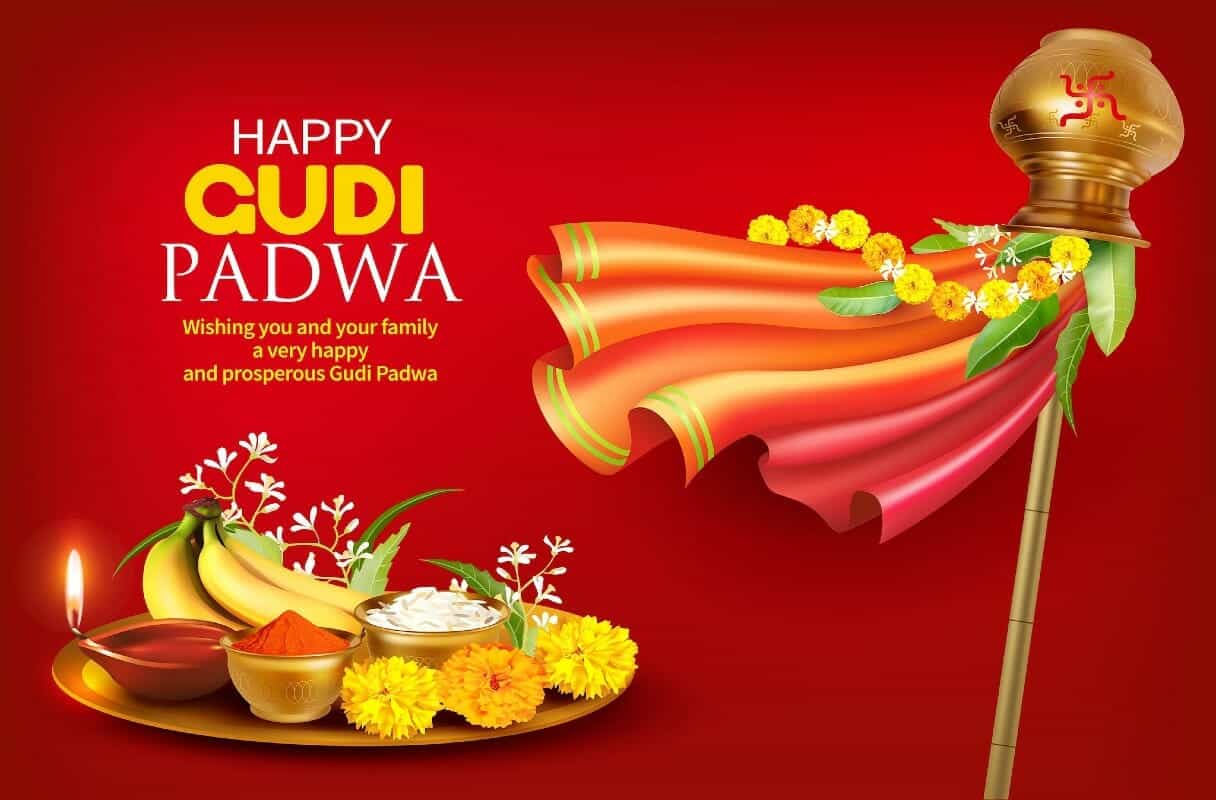
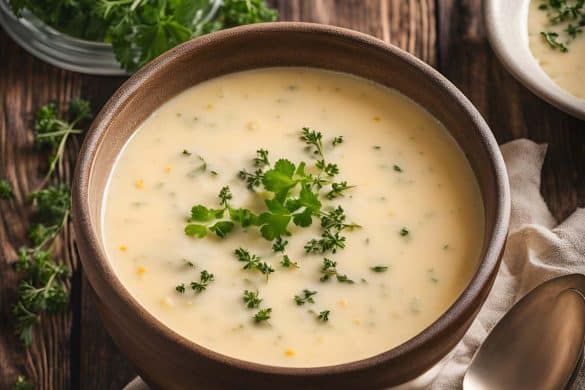


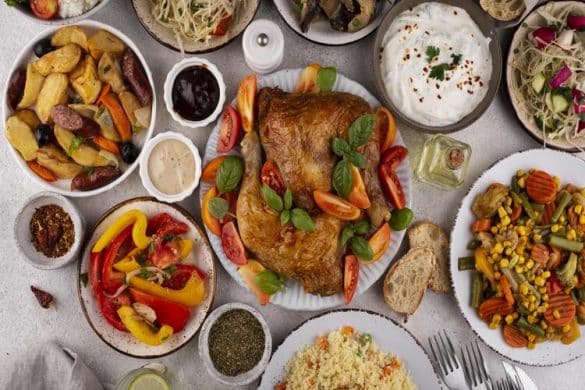
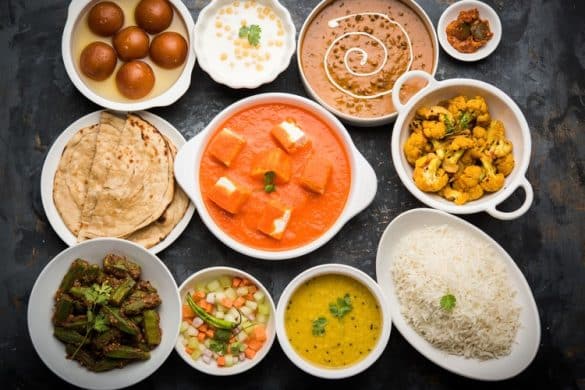

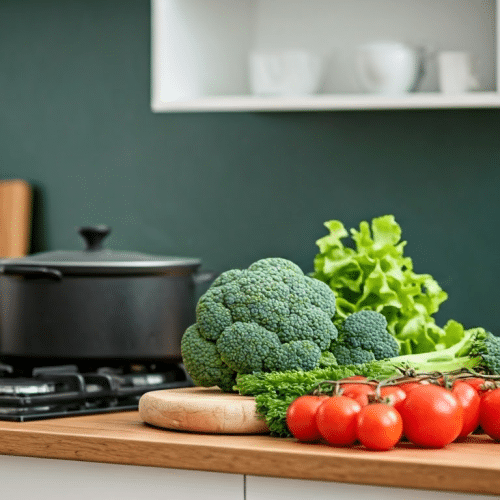
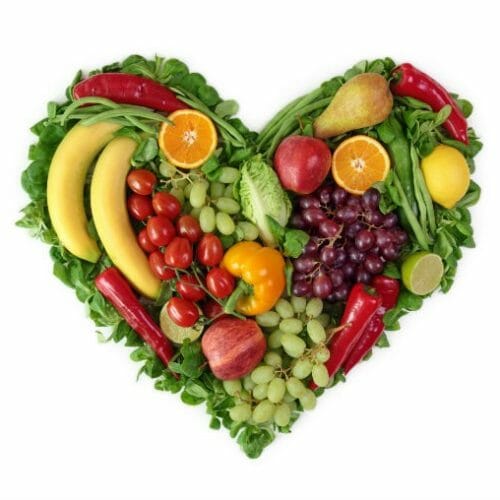
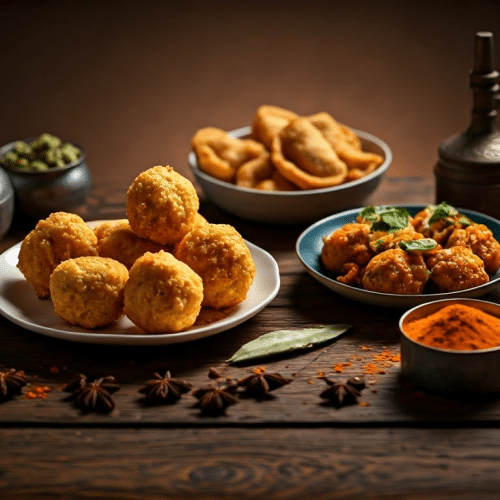


1 comment
Nice Article Ma’am, Thank You